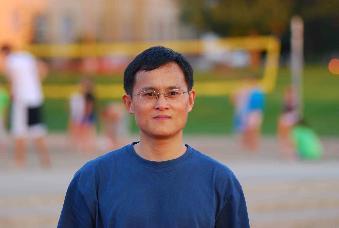
Gao Xianlong
professor Supervisor of Doctorate Candidates Supervisor of Master's Candidates
Honors and Titles : Program for New Century Excellent Talents in University
Gender : Male
Alma Mater : University of Science and Technology of China
Education Level : Graduate student graduate
Degree : Doctorate
Status : 在岗
School/Department : College of Mathematics, Physics and Information Engineering
Date of Employment : 2007-03-29
Discipline : physics
Business Address : Science Building 29#-429
Contact Information : 0579-82298507, 667810(short)
Email :
Hits :
Ranking of Author(s) Affilicated to DUT : 浙江师范大学
Author(s) : 高先龙,梁兆新
Description of Publication : 力学,讲述在20世纪前30年的非凡岁月里人们在理解量子现象的过程中发生的故事,旁征博引,引人入胜。
本书为高年级本科生、物理学家、物理学史家和物理哲学家撰写,讲述在二十世纪前三十年的非凡岁月里我们在理解量子现象的过程中发生的故事。本书没有遵循标准的公理化方法,而是从历史的视角,清晰而权威地阐述了 Heisenberg , Schrodinger 、 Pauli 和 Dirac 等先驱者们如何发展量子力学的基本原理并将它们融合成一个自洽的理论,以及量子力学的数学框架为什么必须如此复杂的原因。
Type of Works : 译著
Public Level : 中国科学技术大学出版社
Translated or Not : no
Born at Anhui Province, Feixi, Ph.D., Professor,
In 1998, Anhui University Department of Applied Physics, Theoretical Physics, Bachelor, Master,
In 2001, University of Science and Technology of China, Department of Astronomy and Applied Physics, Condensed matter physics, Ph.D
Research Interests:
1. Quantum properties of low-dimensional Fermi gas: Studying the exotic quantum phases due to the fermion species, pairing, the external potential, and the interaction;
2. Density functional theory of low-dimensioanl system;
Homogeneous low-dimensional systems are strictly solvable in many cases (eg using the Bethe-Ansatz technique, Bosonization, etc.), and for the inhomogeneous systems they are more complicated and can often be solved by using density functional theory. We study the applications of the density functional theory in the model system. Related examples can be found in the application of density functional theory in the inhomogeneous Hubbard model, non-uniform Lieb-Wu model, Anderson model and Bose-Fermi mixed system. The same idea can be used to deal with disordered problems, finite temperature effects, various dynamical problems;
3. Numerical study of low-dimensional strong correlation system: By means of strict diagonalization and numerical renormalization group, we discuss the ground state, especially the correlation function of low-dimensional systems;
4. Excitation properties of low-dimensional strongly correlation systems: studying low energy excitation such as spin-charge separation phenomenon, spin-drag effect due to the relative motion of different types of fermions, and the use of variational methods and local density approximation to solve the finite temperature, low energy excitation mode.
For students:
I am currently tutoring several graduate students for scientific research. At the same time, I am organizing and supervising a number of junior undergraduates for research and develop their research interests.
See details at http://physics.zjnu.edu.cn/2016/0303/c2480a26226/page.htm
Research team http://course.zjnu.cn/qm/gao/